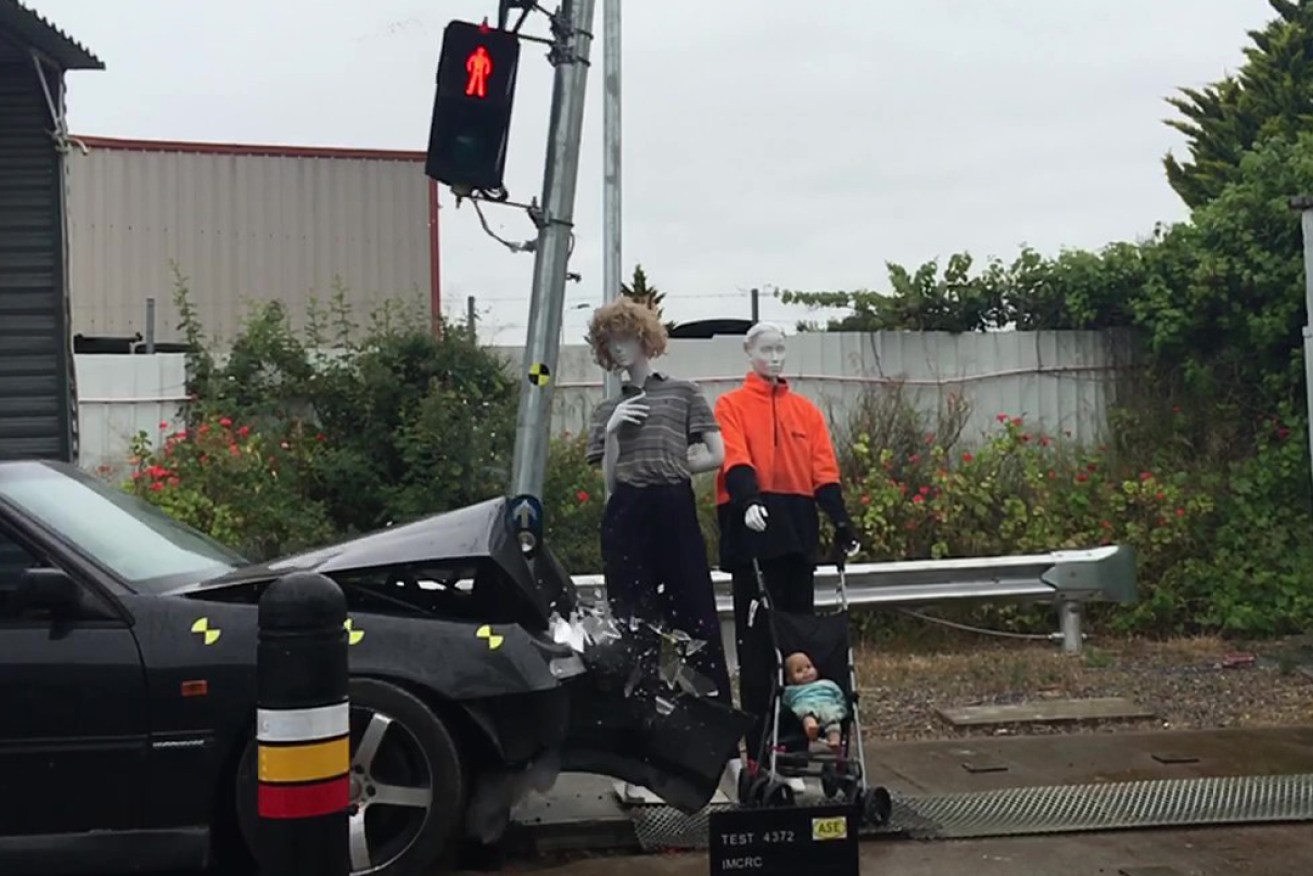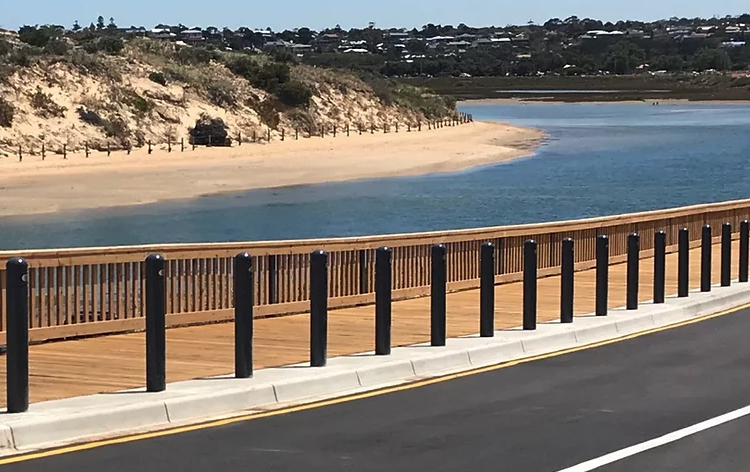Crash absorbing signal lights a traffic stopper
The Adelaide company that developed Australia’s first energy absorbing bollard to protect drivers and stop vehicles mowing down pedestrians is moving to adapt the technology to traffic lights.


A crash simulation test using a prototype IAS traffic light this month.
In partnership with the University of South Australia, Lonsdale-based Impact Absorbing Systems (IAS) will use UniSA’s Testlab and engineering design facilities over the next 12 months to design the shock-absorbing traffic lights, after receiving partial funding through a federal grant from the Innovative Manufacturing CRC.
IAS says its Energy Absorbing Bollard is the only impact-absorbing bollard currently approved by Australian Road Authorities.
The technology allows the bollard to move slightly without collapsing after impact, reducing damage to the vehicle and its occupants, absorbing the energy from the crash in a controlled way and preventing the vehicle to rebound into the path of pedestrians and traffic.
The $640,000 project aims to leverage IAS’s expertise in road safety and UniSA’s engineering design and advanced manufacturing skills to ensure traffic lights can absorb a high-impact crash, remain undamaged and operational, and save pedestrian and motorists’ lives.
UniSA senior lecturer and research lead Dr Mohammad Uddin said the technology had the potential to prevent hundreds of fatalities and injuries each year.
He said the project would involve replicating existing IAS-fabricated energy absorbing bollards and tuning the design to better suit the shape, length and size of common traffic lights, while satisfying regulatory standards.
“Recent statistics show that in Australia, traffic light collisions cost $18.5 million a year in fatalities, $53.7 million for injuries and up to $16 million annually to repair, install and maintain traffic lights,” Dr Uddin said.
“By using the best design and materials which absorb the impact, the traffic lights won’t crumple if hit, but just tilt to a slight angle, stopping an out-of-control vehicle.
“Existing traffic lights are rigid steel, hollow structures which cause severe and fatal injuries to pedestrians and motorists when a vehicle smashes into them.”
The bollards, which will form the lower portion of the traffic light pole, have an underground “crumple zone” to absorb the kinetic energy from a vehicle impact.

Impact Absorbing Systems’ energy absorbing bollards at Port Noarlunga.
Dr Uddin said the impact would likely cause the traffic light to tilt backwards by 15 to 20 degrees without its electronics being damaged.
Advanced manufacturing techniques, materials testing and computational modelling will be used to build and test various designs, delivering a world-first product that complies with road safety standards.
The researchers will also integrate smart sensors into the final design, which will monitor the state and performance of the traffic lights, helping councils to maintain them.
The project is expected to be completed within 12 months and the product ready for use by 2023.
“We expect these new energy-absorbing traffic lights (EATL) will be the standard model going forward, not only for new installations but also to gradually replace existing lights,” Dr Uddin said.
IAS industry lead Grad Zivkovic said the collaboration with UniSA and IMCRC would “revolutionise” current traffic light design.
“By leveraging UniSA’s R&D expertise, we will develop an effective solution that has the potential to improve road safety worldwide,” he said.
“This project will also create pathways for Australian manufacturers to fabricate and supply components of the energy-absorbing traffic lights throughout its development and commercialisation, supporting local industry and global export opportunities.”




